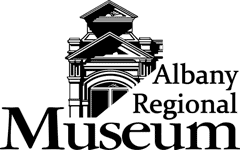By Cathy Ingalls, Albany Regional Museum board member
Before there were automobiles, visitors coming to Albany to transact business or visit friends primarily arrived by railroad, riverboat or horse and carriage.
Oftentimes, they needed a place to stay and eat so they sought out Albany’s hotels that often were just glorified boarding houses. Later, the hotels began to offer more amenities and boasted more comfortable accommodations.
By 1892, Albany had six hotels from which visitors could choose.
Probably one of the best known was the beige brick, four-story St. Francis Hotel that still stands at 406 First Ave. S.W. and now serves as a print shop and storage area.
The 27,000-square-foot building was constructed in 1912 by Ebner Rhodes in what was known as a part of the E.H. Rhodes block that already contained a two-story structure that he built in 1907.
Rhodes was thought to be a fruit buyer, and he lived with his wife, Sarah, in a house he built at 238 Fifth Ave. S.W. that at one time was the Reed Hospital.
Democrat-Herald newspaper stories and paperwork on file at the Albany Regional Museum note that the high ceilings in the St. Francis lobby were covered with sheets of decorative metal, and the floor was white, inch-square ceramic tiles with black and brown tiles inserted in various places to create interest.
A door on the second floor opened into an annex so “drummers,” another word for salesmen, could display their wares for local merchants to see and perhaps purchase. The second floor also served as the employees’ living quarters.
Guests and the townspeople referred to the St. Francis as the “classiest” place in town with the possible exception of the Albany Hotel at Second Avenue and Lyon Street.
At first, the St. Francis designed by Albany architect Charles Burggraf was called the Rhodes Hotel but then the name was changed to the St. Francis, possibly because of a sign.
A 500-pound sign created by the Federal Electric Co. of Chicago in 1903 probably for the St. Francis Hotel in San Francisco became available at no cost. The sign made its way to the hotel in Albany, and the name was switched to accommodate a sign that fell into the owner’s lap.
A night’s stay in the 60-room hotel when it first opened cost 50 cents, the same price as a meal in the dining room. There was no electricity for the upper three floors.
A jitney or a bus ferried guests to and from the train station so they no longer had to walk.
When it no longer was used as a hotel starting in 1966, a number of other businesses called it home, one being the FBI.
Later, plans fell through to turn the hotel into a jazz club with apartments above and then developers thought the building would make a good boutique hotel.
In 2012, the Historic Preservation League of Oregon placed the building on the endangered list.
Here is a roundup of several of Albany’s early hotels.
In 1910 the Charles Burggraf designed Hotel Van Dran was built on the corner of Ninth Avenue and Lyon Street. The Depot Hotel was converted into the kitchen and dining room for the Vandran Hotel.
In 1947 the Vandran closed and later became the Albany-Linn Nursing Home. The building was once again closed in 1974 and then demolished in 1987.
The Revere House was at the corner of First Avenue and Ellsworth Street. The 42-room, wooden structure was built in 1877 by Charles Pfeiffer.
The Hotel Hammel was built in 1912 on the southwest corner of Third Avenue and Ellsworth. The six-story building later became the Hotel Albany, closing in 1967. It has been torn down.
The Exchange Hotel was on the southwest corner of First Avenue and Washington Street.
The Franklin House was south of First between Lyon and Baker streets.
The Russ House was on the northeast corner of First and Lyon.
The St. Charles Hotel was on the northwest corner of First and Washington.
The Depot Hotel was at 10th Avenue and Lyon.
For years, Ralph R. Cronise, an editor and publisher of the Democrat-Herald, made regular rounds of Albany’s hotels to check the guest registries. Then in his columns, he would note who was visiting Albany alongside where they lived.
Many hotel guests were from Mill City, Crawfordsville and Portland.
